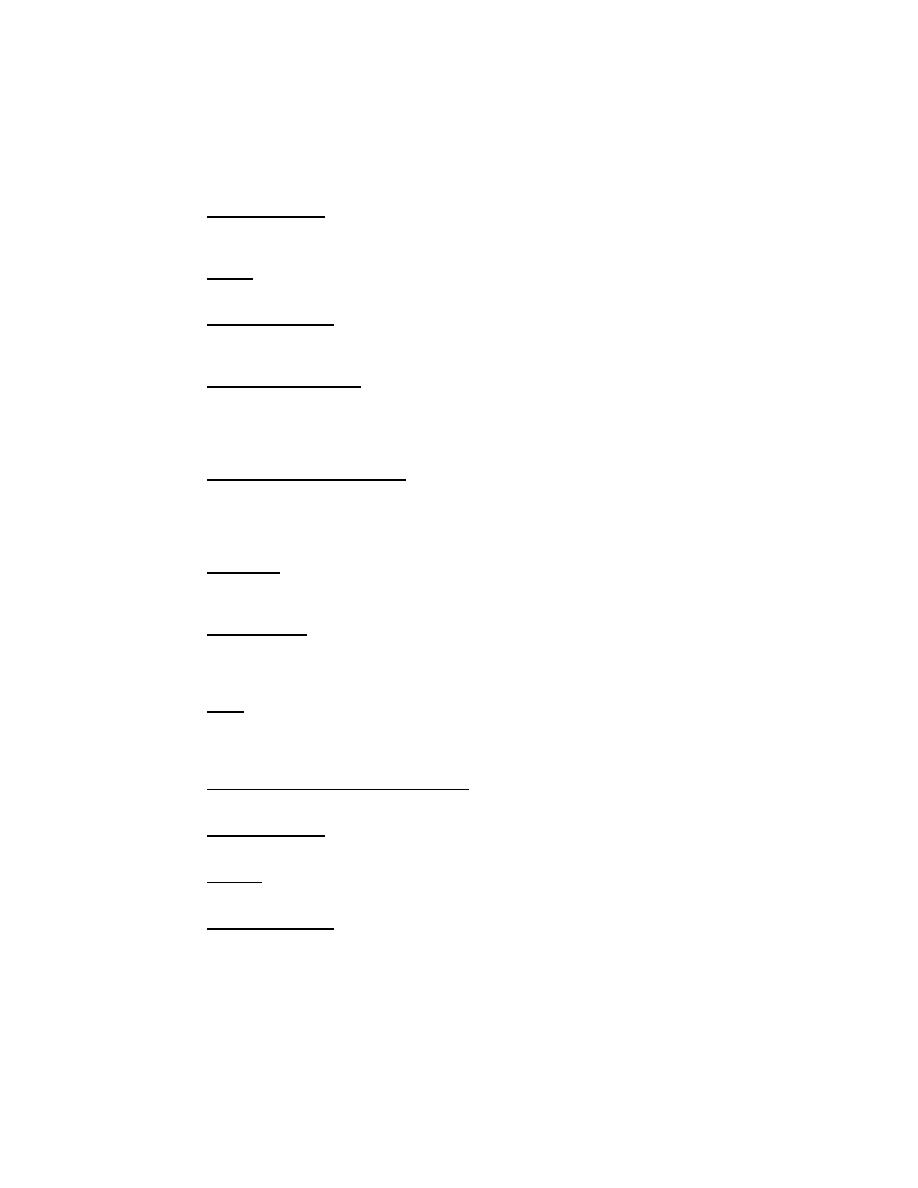
MIL-HDBK-1005/6
curves shall be identical to permit the use of one switch design for all turn
outs. The curve components are as follows:
Central Angle. The series of compound arcs comprising the outer
3.10.1
flexible transition curve have the same central angle as the corresponding arc
of the inside transition curve (See Figure 8 and 9).
3.10.2
3.10.3
Gage Reduction. The required gage reduction through the flexible
transition curve is obtained by shifting the outer curve back of the S.C.T.
along tangent ts a distance d (See Figure 7).
3.10.4
Alignment Closure.
A short tangent distance t1 is then introduced
between the end of the switch
curve and the beginning of the outer flexible
transition curve (See Figures
7 and 9). A short tangent distance is also
introduced between the end of
the flexible transition curve and the main
circular curve (See Figures 7
and 9).
Switch Curve (Outside). The outer switch curve, which is the first
3.11
20 feet of the transition curve, is an arc of constant radius of 300 feet.
This switch curve is identical with that used for the first 20 feet of
curvature on the inner alignment, permitting the standard switch to be
inserted at the point of tangency of any curve at any time.
Location. The point of beginning of the outer switch (fixed) curve
3.11.1
is precisely located laterally opposite the point of beginning of the inner
switch curve.
Convergence. The outer and inner switch curves being identical
3.11.2
results in the outer curve converging on the inner curve. This convergence
closely approximates the required gage reduction, so that a negligible amount
of misalignment is introduced.
Lead. The inner and outer switch curves are not concentric.
3.11.3
Therefore, a point radially opposite the forward end of the inner switch is
ahead of the forward end of the outer switch curve. This distance is called
the lead.
Main Circular Curve (Outside). This curve is an arc of constant
3.12
radius which is concentric with the corresponding inside main circular curve.
Central Angle. The outside main circular curve has the same
3.12.1
central angle as the inside main circular curve.
Radius. The radius of this curve is obtained by adding Gmin to the
3.12.2
radius of the inside main circular curve (See Figure 7).
The gage on this curve is constant and equal to
3.12.3
Gage Reduction.
Gmin.
32



 Previous Page
Previous Page
